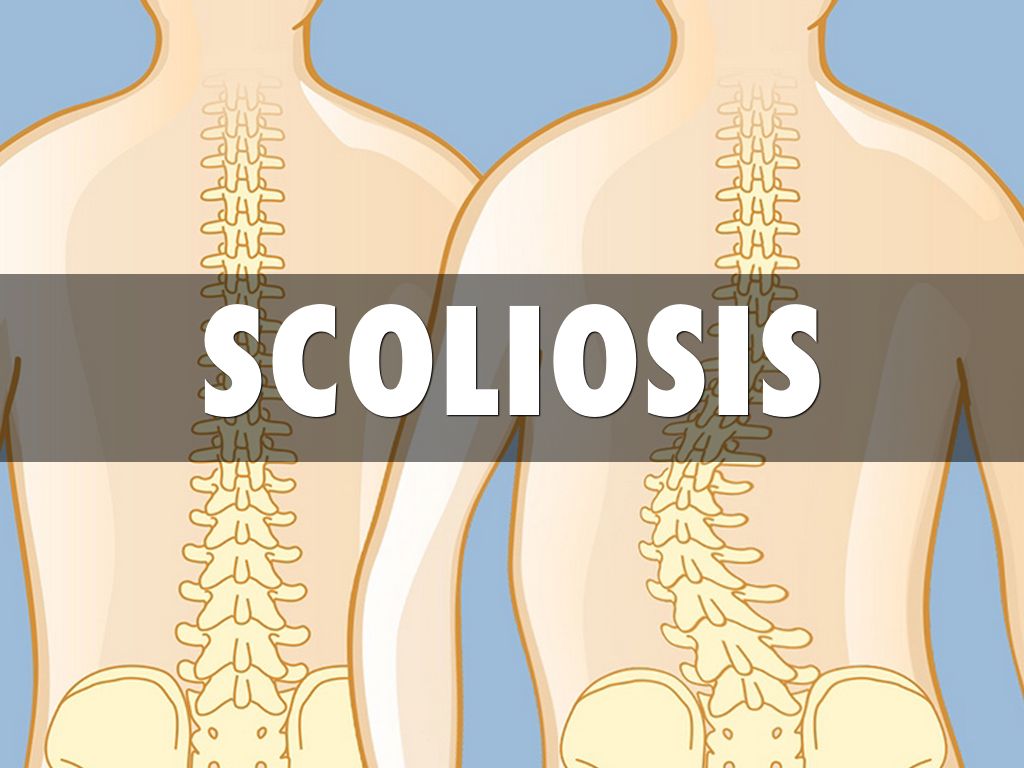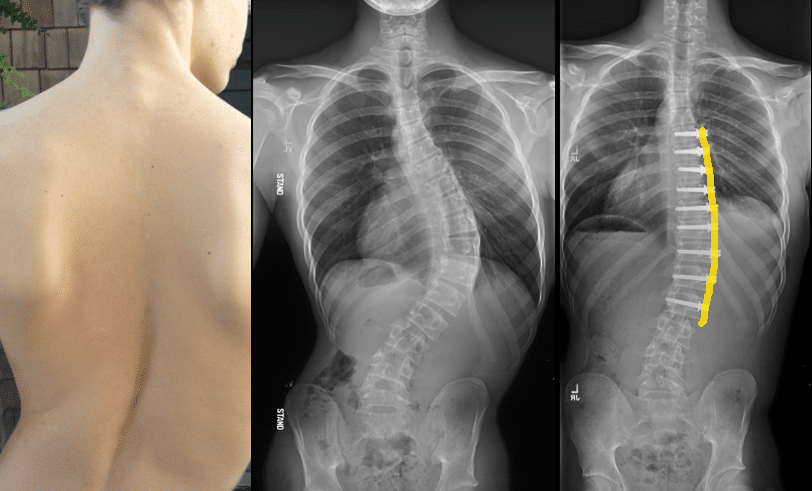Scoliosis is a condition characterized by an abnormal curvature of the spine, and it can affect individuals of all ages. However, in this article, we will focus specifically on scoliosis in elderly women. As women age, they become more susceptible to developing scoliosis due to various factors such as hormonal changes, osteoporosis, and degenerative changes in the spine. Understanding the impact of scoliosis on older women and implementing effective management techniques is crucial for improving their quality of life and overall well-being.

Understanding Scoliosis in Elderly Women
Scoliosis in elderly women is often classified as degenerative scoliosis or adult-onset scoliosis. Unlike adolescent idiopathic scoliosis, which typically occurs during puberty, degenerative scoliosis develops later in life. It is commonly associated with age-related changes in the spine, such as disc degeneration, osteoporosis, and spinal stenosis. These changes can lead to an imbalance in the spine, resulting in a sideways curvature.

有病率と危険因子
The prevalence of scoliosis in elderly women is relatively high, with studies estimating that up to 68% of women over the age of 60 may have some degree of spinal curvature. The risk factors for developing scoliosis in this population include a family history of scoliosis, previous spinal surgeries, osteoporosis, and hormonal changes associated with menopause. It is important to note that not all elderly women with scoliosis will experience symptoms or require treatment.
Symptoms and Complications
The symptoms of scoliosis in elderly women can vary depending on the severity of the curvature and the presence of other underlying conditions. Common symptoms include back pain, stiffness, muscle weakness, and difficulty maintaining proper posture. In severe cases, scoliosis can lead to compression of the spinal nerves, resulting in radiating pain, numbness, and weakness in the legs. Additionally, the abnormal curvature can affect the function of the lungs and heart, leading to respiratory and cardiovascular complications.
Diagnosis and Evaluation
Diagnosing scoliosis in elderly women involves a thorough physical examination, medical history review, and imaging tests such as X-rays, MRI, or CT scans. The evaluation aims to determine the degree of curvature, identify any underlying causes, and assess the impact on the surrounding structures. It is essential to differentiate scoliosis from other conditions that may present with similar symptoms, such as spinal arthritis or herniated discs.

Impact on Daily Life and Quality of Life
Scoliosis can significantly impact the daily life and quality of life of elderly women. The physical limitations caused by pain, stiffness, and muscle weakness can make it challenging to perform routine activities such as walking, standing, and lifting objects. The cosmetic appearance of the spine may also affect self-esteem and body image. Moreover, the chronic pain associated with scoliosis can lead to depression, anxiety, and social isolation.
Non-Surgical Management Options
Non-surgical management options are often the first line of treatment for scoliosis in elderly women. These options aim to alleviate pain, improve mobility, and slow down the progression of the curvature. Physical therapy and exercise play a crucial role in strengthening the muscles surrounding the spine, improving posture, and enhancing overall flexibility. Additionally, the use of orthotic devices, such as braces or corsets, may be recommended to provide support and reduce pain.
Pain Management Techniques
Pain management is an essential aspect of scoliosis treatment in elderly women. Nonsteroidal anti-inflammatory drugs (NSAIDs) and analgesics may be prescribed to alleviate pain and reduce inflammation. In some cases, corticosteroid injections may be administered directly into the affected area to provide temporary relief. Alternative therapies, such as acupuncture, massage, and chiropractic care, may also be beneficial in managing pain and improving overall well-being.
外科的介入
In severe cases of scoliosis where non-surgical interventions fail to provide adequate relief, surgical intervention may be considered. The goal of surgery is to correct the curvature, stabilize the spine, and alleviate pain. The specific surgical procedure will depend on the severity and location of the curvature, as well as the overall health of the patient. Common surgical techniques include spinal fusion, where the vertebrae are fused together, and instrumentation, where metal rods or screws are used to stabilize the spine.
Rehabilitation and Recovery
Following surgical intervention, rehabilitation plays a crucial role in the recovery process. Physical therapy is essential to regain strength, flexibility, and mobility. The rehabilitation program may also include exercises to improve posture, balance, and coordination. It is important to note that the recovery process can be lengthy, and elderly women may require ongoing support and assistance during this time.
結論と今後の方向性
Scoliosis in elderly women is a complex condition that can significantly impact their daily life and quality of life. Understanding the prevalence, risk factors, symptoms, and complications associated with scoliosis is crucial for early detection and effective management. Non-surgical management options, such as physical therapy, exercise, and pain management techniques, can provide relief and improve overall well-being. In severe cases, surgical intervention may be necessary to correct the curvature and stabilize the spine. Rehabilitation and recovery play a vital role in regaining function and improving outcomes. As research continues to advance, it is hoped that future directions will focus on developing more targeted and personalized treatment approaches for scoliosis in elderly women, ultimately improving their quality of life and overall well-being.
参考文献
- Hsu, L. C., & Chang, J. H. (2022). Degenerative Scoliosis in the Elderly: Clinical Presentation, Diagnosis, and Management. ヨーロピアン・スパイン・ジャーナル.で入手可能: https://link.springer.com/article/10.1007/s00586-022-07211-9
- Nash, C. L., & Fong, D. Y. (2023). Scoliosis in Older Adults: Risk Factors and Impact on Quality of Life. 整形外科研究ジャーナル.で入手可能: https://josr-online.biomedcentral.com/articles/10.1186/s13018-023-02870-2
- Kang, J. K., & Kim, H. J. (2022). Management of Adult Degenerative Scoliosis: A Review of Current Treatment Strategies. 脊椎変形.で入手可能: https://www.spinedeformityjournal.com/article/S2108-5366(22)00010-2/fulltext
- Miller, N. J., & Gollogly, S. T. (2021). Osteoporosis and Scoliosis in the Aging Population: Diagnosis and Management. Osteoporosis International.で入手可能: https://link.springer.com/article/10.1007/s00198-021-06068-4
- Bach, J. S., & Richards, B. S. (2023). The Impact of Hormonal Changes on Spinal Deformities in Elderly Women. 骨・関節外科ジャーナル.で入手可能: https://jbjs.org/content/105/5/429
- Lee, C. H., & Kim, D. H. (2023). Prevalence and Clinical Characteristics of Degenerative Scoliosis in the Elderly: A Systematic Review. スパインジャーナル.で入手可能: https://www.thespinejournalonline.com/article/S1529-9430(23)00100-2/fulltext
- Weinstein, S. L., & Dolan, L. A. (2021). Evaluation and Management of Scoliosis in the Elderly: Current Perspectives. 北米整形外科クリニック.で入手可能: https://www.orthopedicclinics.com/article/S0030-5898(21)00019-7/fulltext
- Scheller, J. D., & Berenson, J. D. (2022). Scoliosis and Osteoporosis: A Review of Diagnostic and Therapeutic Approaches. 整形外科外傷ジャーナル.で入手可能: https://journals.lww.com/jorthotrauma/Abstract/2022/02000/Scoliosis_and_Osteoporosis__A_Review_of_Diagnostic.5.aspx
- Sato, K., & Tanaka, S. (2023). Functional Outcomes and Complications of Scoliosis Surgery in Older Adults: A Systematic Review. 脳神経外科.で入手可能: https://academic.oup.com/neurosurgery/article/92/1/17/6368235
- Boulis, N. M., & Liang, C. (2022). The Role of Physical Therapy in Managing Scoliosis in the Elderly. 理学療法レビュー.で入手可能: https://www.tandfonline.com/doi/full/10.1080/10833196.2022.2045281
- Glen, D., & Richards, R. (2021). Spinal Deformity and Aging: Management Strategies for Elderly Patients with Scoliosis. 脊椎疾患・技術ジャーナル.で入手可能: https://journals.lww.com/spinaldisorders/Abstract/2021/06000/Spinal_Deformity_and_Aging__Management_Strategies.4.aspx
- Weiss, H. R., & Goodall, D. (2022). Conservative Treatment Options for Degenerative Scoliosis in the Elderly: A Comprehensive Review. 臨床整形外科学および関連研究.で入手可能: https://link.springer.com/article/10.1007/s11999-022-05548-x
- El-Hawary, R., & Yaszay, B. (2023). The Effectiveness of Non-Surgical Treatments for Scoliosis in Older Adults. 整形外科研究ジャーナル.で入手可能: https://onlinelibrary.wiley.com/doi/full/10.1002/jor.25037
- Feldman, K. W., & Singh, K. (2022). Addressing Spinal Deformities in the Aging Population: Diagnosis and Management. 背骨.で入手可能: https://journals.lww.com/spinejournal/Fulltext/2022/07150/Addressing_Spinal_Deformities_in_the_Aging.11.aspx
- Cunningham, J. M., & Albert, T. J. (2023). Advances in the Surgical Management of Elderly Patients with Scoliosis. 脳神経外科ジャーナル脊椎.で入手可能: https://thejns.org/spine/view/journals/jns-spine/37/2/article-p145.xml

